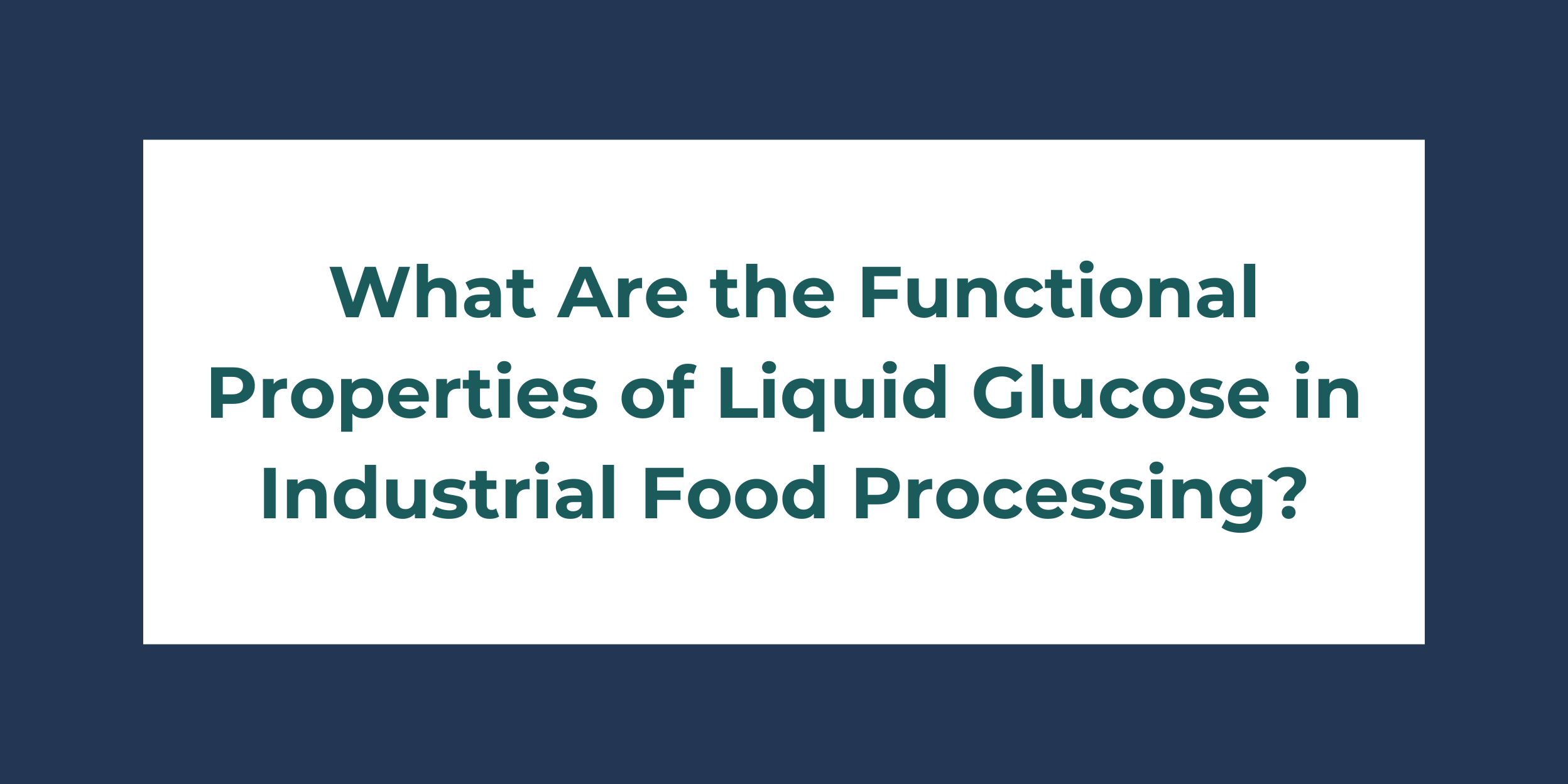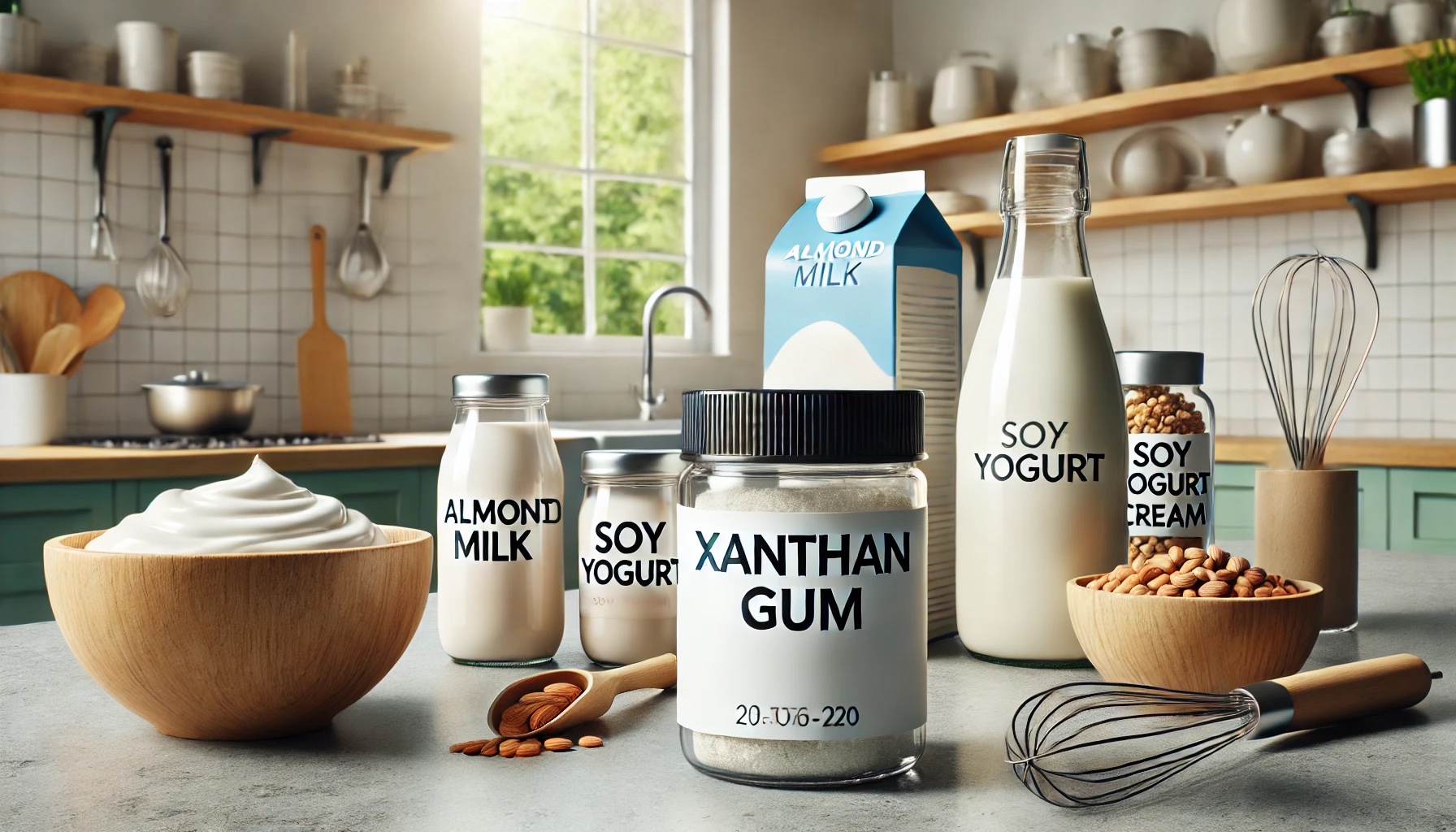What Is Liquid Glucose?
Liquid glucose, also known as glucose syrup, is a viscous sweetener obtained from the hydrolysis of starch. It is primarily composed of glucose, maltose, and higher saccharides. Its production involves the breakdown of starch molecules (typically corn, wheat, or rice) through enzymatic or acid hydrolysis. The resulting syrup has a diverse range of applications, especially in industrial food processing, due to its functional properties.
How Is Liquid Glucose Produced?
- Starch Hydrolysis Process:
- Raw Material Selection: Corn is the most commonly used source, but wheat, rice, or potatoes may also serve as the starch source.
- Enzymatic Hydrolysis: Starch is broken down into glucose and other sugars by adding amylase enzymes, such as alpha-amylase and glucoamylase.
- Acid Hydrolysis: In some cases, acid (hydrochloric or sulfuric) is used to break down the starch. However, this method is less preferred due to potential degradation of flavor.
- Filtration and Refinement: Post-hydrolysis, the syrup is filtered, decolorized, and concentrated through evaporation to achieve the desired viscosity and sweetness level.
What Are the Key Functional Properties of Liquid Glucose in Food Processing?
- Sweetness Control:
- Low-to-Moderate Sweetness: Compared to sucrose (table sugar), liquid glucose has a less intense sweetness, which makes it ideal for balancing flavors in various products. It provides a mild, clean taste that doesn’t overpower other ingredients.
- Customizable Dextrose Equivalent (DE): DE is a measure of the syrup’s sweetness and reducing sugar content. A higher DE results in a sweeter and more fluid syrup, while a lower DE creates a more viscous product. Producers can customize the sweetness profile by adjusting the DE based on the application.
- Texture and Mouthfeel:
- Viscosity Control: Liquid glucose provides a smooth, thick texture that enhances the body and mouthfeel of foods like sauces, dressings, and bakery items. Its viscosity varies with DE levels, making it adaptable for specific textural requirements.
- Mouth-Coating Effect: In confectionery and desserts, liquid glucose coats the mouth, creating a pleasant, rich mouthfeel that improves the overall sensory experience.
- Hygroscopicity (Moisture Retention):
- Moisture Binding: One of the key functional properties of liquid glucose is its ability to retain moisture. This is critical in baked goods, as it helps maintain softness, chewiness, and freshness by preventing them from drying out.
- Prevents Crystallization: In candies and other confectionery products, liquid glucose inhibits the crystallization of sugars, ensuring a smooth texture and prolonging shelf life.
- Stabilization and Shelf-Life Extension:
- Anti-Crystallization in Confectionery: Liquid glucose’s ability to inhibit sugar crystallization is particularly vital in the production of hard candies, fondants, and caramels. It prevents the formation of large sugar crystals that would otherwise give the product a gritty texture.
- Extended Freshness in Baked Goods: By retaining moisture and stabilizing sugars, liquid glucose extends the shelf life of cakes, pastries, and other baked products. This is particularly important for mass-produced baked goods that need to maintain their freshness for extended periods.
- Freezing Point Depression:
- Reduced Freezing Point: Liquid glucose lowers the freezing point of products like ice cream, frozen desserts, and sorbets. This property prevents the formation of large ice crystals, which can compromise the smooth texture of frozen products.
- Enhanced Scoopability: In frozen dairy products, liquid glucose makes ice cream softer and more scoopable, even at low temperatures, by disrupting the water crystal formation process.
- Fermentation Control:
- Fermentation Support: In yeast-leavened baked goods, liquid glucose serves as a fermentable sugar, providing a readily available source of glucose for yeast metabolism. This ensures consistent fermentation and dough rise, crucial in bread production.
- Controlled Yeast Activity: The viscosity and sugar composition of liquid glucose can be adjusted to regulate yeast activity, helping to produce the desired dough structure and volume.
How Does Liquid Glucose Enhance the Processing of Specific Food Categories?
- Confectionery:
- Smooth Texture: Liquid glucose is widely used in the production of candies, caramels, and jellies to prevent sugar crystallization and create a consistent, smooth texture.
- Increased Shelf Stability: By reducing water activity, it helps prevent microbial growth, thus extending the shelf life of sweets.
- Flexible Viscosity for Moldable Products: The variable DE allows manufacturers to produce glucose syrups with different viscosities, perfect for creating products like marshmallows or gummies.
- Baked Goods:
- Extended Freshness: The moisture-retention property of liquid glucose is particularly useful in cakes, cookies, and pastries, keeping them soft and fresh over time.
- Improved Dough Structure: Liquid glucose aids in the formation of doughs that are easier to work with, thanks to its water-binding properties. This improves the final product’s structure, texture, and volume.
- Beverages:
- Energy Drinks and Sports Beverages: It is a quick source of energy, making it ideal for use in sports drinks and energy beverages. It helps maintain the desired viscosity without affecting clarity or flavor balance.
- Flavor Enhancer: In beverages, liquid glucose can enhance the perception of certain flavors by mellowing bitterness and adding subtle sweetness.
- Dairy and Frozen Desserts:
- Textural Improvements: In dairy products like yogurt or ice cream, liquid glucose helps create a creamy, smooth texture. It prevents the formation of ice crystals in frozen desserts, ensuring a silky, rich consistency.
- Freeze-Thaw Stability: In frozen desserts, liquid glucose enhances stability during freeze-thaw cycles, preventing texture degradation over time.
What Are the Nutritional and Functional Benefits of Liquid Glucose in Industrial Use?
- Quick Energy Source:
- High Glycemic Index: It is rapidly absorbed and metabolized, making it a quick source of energy. This property is particularly beneficial in energy bars, sports drinks, and other functional foods designed for quick energy replenishment.
- Customized Caloric Content: With its variable DE levels, manufacturers can tailor the energy content of food products based on consumer needs, offering everything from high-energy products to lighter snacks.
- Digestibility:
- Easily Digestible Carbohydrate: It is an easily digestible carbohydrate, making it suitable for use in food products for children, athletes, and individuals with digestive issues who require a readily available energy source.
What Are the Technical Considerations When Using Liquid Glucose in Food Formulations?
- Water Activity Management:
- Preventing Moisture Migration: In multi-component food systems, such as layered cakes or filled chocolates, liquid glucose helps manage water activity, preventing moisture migration between layers and maintaining the integrity of the product.
- Heat Stability:
- Thermal Resistance: In applications that require heat, such as candy making or baking, liquid glucose demonstrates excellent heat stability. It withstands high temperatures without breaking down, which is essential for ensuring consistency in final products.
- Customizable Viscosity:
- Application-Specific Viscosity: The viscosity of liquid glucose can be tailored by adjusting the DE, making it versatile for various applications. A lower DE results in a more viscous syrup suitable for chewy products, while a higher DE creates a thinner syrup perfect for beverages or sauces.
Conclusion: Why Is Liquid Glucose a Versatile Ingredient in Industrial Food Processing?
Liquid glucose’s unique combination of sweetness control, moisture retention, anti-crystallization, texture improvement, fermentation support, and freeze-thaw stability make it an indispensable ingredient in industrial food production. Its adaptability in terms of viscosity and DE allows it to be tailored to a wide variety of applications, from confectionery and baked goods to beverages and dairy products. These functional properties not only enhance the quality of food products but also contribute to extending shelf life, improving texture, and providing consistent performance under various processing conditions.








